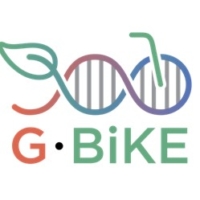Today, we face dramatic biodiversity loss due to the combined effects of land use and climate change. This loss is mainly calculated in terms of number of species, with scarce knowledge about loss of diversity at the genome level. Genetic (genomic) diversity is variation at the DNA level essential for adaptive capacity of species and populations. Rapid climate change increases the need for maintaining genetic diversity that will enlarge buffering capacity of species and ecosystems. However, the relevance of genetic diversity in biodiversity protection and management has been only rarely included in policies and regulations.
G-Bike COST Action, which stands for Genomic BIodiversity Knowledge for Resilient Ecosystems aims at developing common ways in which genomic science can be practically incorporated to better address ecosystem management and policy priorities. The network is cycling towards it and gathers scientists and practitioners from 39 countries to highlight the importance of genetic and genomic tools in biodiversity conservation.
To this end, the COST Action G-BiKE, together with the Group on Earth Observations Biodiversity Observation Network, (GEO-BON) and the International Union for Conservation of Nature, (IUCN), have recently developed three genetic indicators to be included in the next Convention on Biological Diversity (CBD) strategy:

G-BiKE communicated this latest research to the CBD (Convention on Biological Diversity). Focal Points in the series of webinars (September-November 2020) that was attended by total of 94 participants from 46 countries all over the world.
Dr Cristiano Vernesi, the Action chair, had the opportunity to present the G-BiKE main vision and direction to establish the role of genomics in managing biodiversity and to develop standardized monitoring tools and guides. These guidelines can be then implemented in local site management and ultimately in EU-wide policy.
During the webinars, Prof. Dr Linda Laikre (G-BiKE Policy Group) from Stockholm University, Sweden, presented fundamental concepts of genetics and effective population size, while Dr Sean Hoban from the Morton Aboretum, USA, introduced genetic diversity indicators – what they are, how they support the post-2020 CBD Global Biodiversity Framework goals/targets and their use for conservation policy support.
Dr Per Sjögren-Gulve from Swedish Environmental Protection Agency, and G-BiKE ‘s working group leader on implementing genetics into management, gave practical examples of applying proposed genetic indicators in practice in Sweden.
A great variety of questions were answered during the webinars. Beside Sweden, representatives from Mexico, Costa Rica, Madagascar, and the Central Africa Republic immediately expressed their will to test the proposed genetic indicators.
Furthermore, through those webinars G-BiKE fostered the relation with the Convention on Biological Diversity. One of the recent outcomes is that statement of the G-BiKE network: the Group on Earth Observations Biodiversity Observation Network, and the International Union for Conservation of Nature on the need for better goals, targets, and indicators of genetic diversity in CBD is available on their website: Statement on genetic diversity in CBD.
In line with this, Dr Per Sjögren-Gulve organized a two days workshop “Genetic/genomic methods in conservation and monitoring” on 10th and 12th of November 2020 for the Skania (Sweden) County Administrative Board (CAB, a Swedish Government Agency in each of the counties of Sweden).
The main responsibilities of the CAB are to coordinate the development of the county in line with goals set in national politics, and the Swedish Agency for Marine & Water Management (SwAM, the responsible Government agency tasked to protect, restore and ensure sustainable use of freshwater resources and seas including fisheries management).
28 participants have attended the workshop, half of them were experts from G-BiKE COST Action and half were representatives from the CAM and SwAM. The G-BiKE COST Action objectives and current work were briefly presented to participants and they have shown interest to be further informed about G-BiKE’s work, especially because they are starting different genetic monitoring programmes in Sweden.
During online workshop, questions and cases were raised by representatives from the CAM and SwAM. They have discussed together with G-BiKE experts how genetic knowledge and methods can be used in practical cases of species and biodiversity conservation and monitoring.
During the second day of workshop, three different groups discussed questions in specific break-out rooms:
(1) Genetic monitoring in general, including project design and standards, and detection and monitoring of alien invasive species;
(2) Genetic aspects of population reinforcements and reintroductions – plants;
(3) Genetic aspects of population reinforcements and reintroductions – animals.
Dr Christina Hvilsom from Copenhagen Zoo gave plenary talk on captive breeding (rearing) of species of conservation concern for population reinforcement or reintroduction – some implications, experiences, and recommendations from captive breeding projects. In addition to fruitful discussion in break-out rooms, Dr Kristin Löwenborg from Swedish Environmental Protection Agency gave an overview of plans for next year for genetic monitoring programme of terrestrial species in Sweden.
Additional information.
